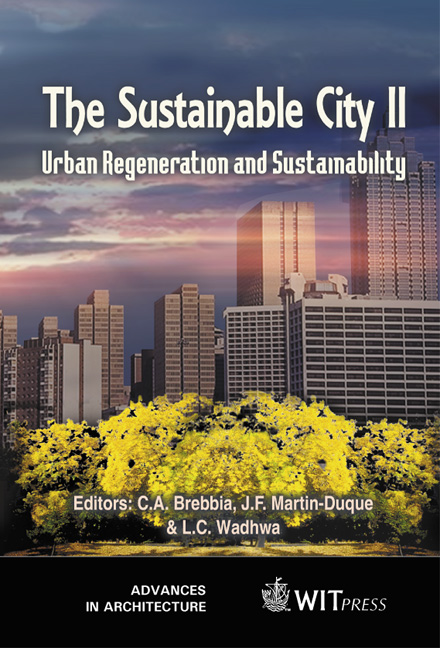Neural Geo-spatial Model For Urban And Transportation Sustainability – System’s Diagnosis
Price
Free (open access)
Transaction
Volume
54
Pages
Published
2002
Size
608 kb
Paper DOI
10.2495/URS020841
Copyright
WIT Press
Author(s)
D A Soria Alves, A Dantas, K Yamamoto & Y Yamashita
Abstract
Neural geo-spatial model for urban and transportation sustainability -system’s diagnosis D. A. Soria Alves1, A. Dantas1, K. Yamamoto1 & Y. Yarnashita2 1 Dept. of Civil Engineering, Nagoya Institute of Technology, Japan. 2 Master Program in Transportation, University of Brasilia, Brazil. Abstract A strategic planning model for vehicular air pollution analysis is presented. The model is based on the representation of the urban, transportation and environment conditions interacting under a neural geo-spatial approach to forecast vehicular air pollution for the stage of diagnosis, as a contribution for an urban and transportation sustainability. A case study in Nagoya City Area was conducted to verify the efficiency of the model and to evaluate the best NN structure and also changes in the hidden and output layers were simulated. The result reached expresses an efficient definition of the NN, and also allows the continuance of the research. 1 Introduction The last century was known by technological advances. Of those, the main development was that of the automobile industry in order to solve the problems of urban displacement. Important achievements were made in this field, allowing an urban growth unthinkable years before. At the same time these benefits were followed by disadvantages such as traffic jams and air pollution, which have compromised the urban quality of life. Concern with the future sustainability of the world’s cities began in the 80’s, when the first concept of Sustainable Development was introduced as, \“development that meets the needs of the present without compromising the ability of future generations to meet their own needs.” [l] and was formalized
Keywords





